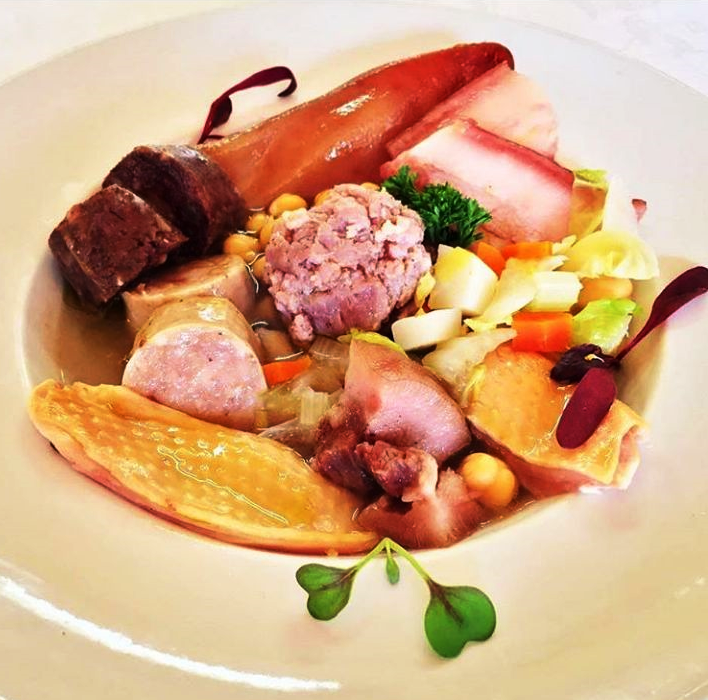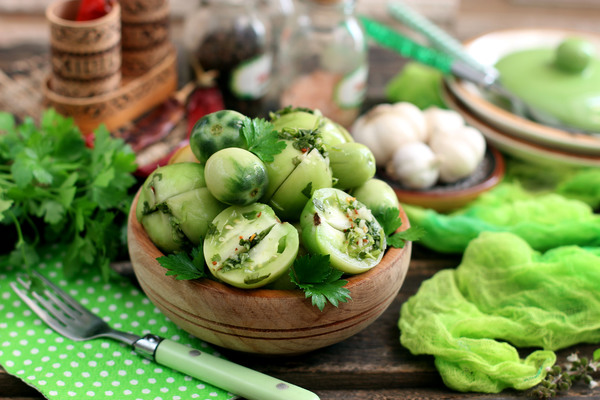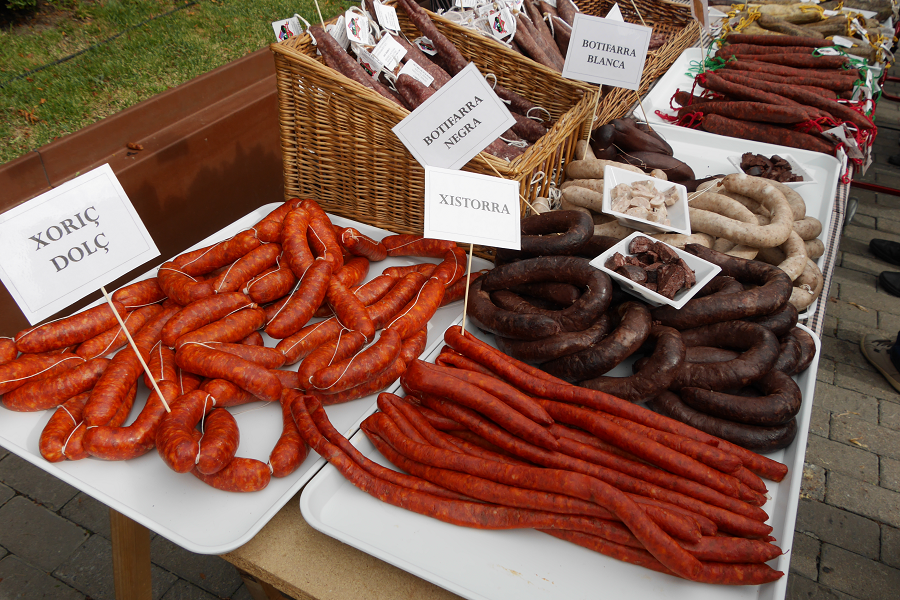Escudella is a typical Catalan broth and, essentially, it is the same dish as the putxero with meatballs or broth with meatballs from Valencia (Spain). It is made by simmering meat in a pot with vegetables such as chickpeas, potatoes and cabbage. Usually, onion or leek, celery, carrots and one or two cloves of garlic are also added. Because it is a hot dish, it is usually eaten in winter. It has an intense, moderately salty flavour depending on the variety of ingredients that are used. The level of saltines depends on the taste of each person, although generally it is advisable not to add salt as its already contained in the ingredients. The texture of escudella is usually very soft, although it can be thickened with meat or by adding grains. It does not have a specific recipe since it is a traditional dish and each person, family or town preppers it in their own way. At Christmas, it is usually cooked with soup de galets, a large pasta that is sometimes stuffed with small meatballs.
Carn d’olla (traditional stewed meat) is usually made up of black and white sausages, pilota (meatball), lean beef, a bit of lamb, chicken breast, some pork cheeks or ears, and bacon.
Pilota (meatball) is a very characteristic part of carn d’olla, it is made by mixing minced meat with egg, garlic, parsley and some pepper and salt, forming a large, oval meatball that is cooked with broth and usually cut into thick slices at the time of serving. In particular, the pilota for Christmas escudella is made by mixing beef and pork minced meat, with egg, garlic and chopped parsley, grated bread and black pepper, which are than formed to an elongated meatball about 15 cm long and 8 cm in diameter, which is covered with flour before cooking. Other simpler Catalan soups may also have meatballs. When it comes to everyday food, there are broth soups made with pasta and small meatballs, the size of a grape.
Carn d’olla can be served together with vegetables and broth or separately. When served without the broth, the meat and potatoes are accompanied with a vinaigrette.
Traditionally the broth was separated and the soup was made from it by cooking in it thick noodles or rice. Since less time is dedicated to cooking, considering its elaboration and the variety of ingredients that it requires, it has become a Christmas or winter holiday dish. At Christmas, it is typical to eat the soup with large galettes (a type of large pasta) sometimes stuffed with minced meat, that is not very common at any other time of the year, while the rest of the year it is often eaten with thick noodles and rice.
Etymology
The word escudella in the Middle Ages referred to the bowl to which soups and dishes with sauce were served, later, as with many traditional dishes (paella, caldereta, ollada, tìa, tagina, etc.), the content started to be called with the name of the container. It has also shaped other words, for example, the verb escudellar, which would mean to serve the soup on the plate. It has also derived to an idiomatic expression of the language: “fer escudella” (eng. to make escudella), which means to annoy, to bother. At that time the soups were eaten with bread.
Origin
Escudella with carn d’olla is the oldest documented soup dish in Europe and Francesc Eiximenis (Catalan Franciscan writer from the fourteenth century of the Crown of Aragon) explains that in the 14th century it was a dish that every Catalonian ate every day. It originates with the peasant families that cooked the remains of the harvest and other ingredients from the pantry.
Formerly, on a weekday the pilota was made only with bread crumbs and bacon. This type of escudella was also made in Occitania, where the meatball was called ròsola. The meatball of bread and bacon still exist, or rather an evolution of it, in which, over time, the bread was replaced with potatoes, it is called farcidures.
If there was meat leftover from the carn d’olla, it was warmed on a pan or served cold and mixed. In some places, the meat leftovers were used to make a trinxat with potatoes and cabbage, celery, etc. as desired (trinxat is a mix of mashed potatoes with the above mentioned ingredients).
These soups could have been made with seasonal vegetables, root vegetables and meats that were available. They were eaten very often, if not every day, in a large part of Europe and the Mediterranean, in each place adapted according to the available ingredients. The specific ingredients also depended on the personal economy of each family and to what they had available at the time of preparation in the garden and pantry. Moreover, there were different versions depending on the occasion whether it was prepared for a “party” or just a weekday. The weekday versions had more vegetables and bones and little meat while those prepared for celebrations, in the Catalan Countries, had to have “the Quatre Evangelistes” (eng. four evangelists): pork, chicken, beef and lamb. The olla or escudella with Christmas carn d’olla was the richest party version.
The escudella recipe with potato is quite recent, since this ingredient was not introduced into Catalan cuisine until one or two centuries after contact with America. Some time ago beans, also of American origin, were also added to it. In the recipe book La cuynera catalana (19th century), the term escudella is still generic for various soups (green, with meat and vegetables, Fish Day soup, without any meat or fish, lentils, peas, toasted bread, etc.) and it is used interchangeably without apparent criterion with the word soup. Yes, it also appears mentioned explicitly, as a separate dish, the “boiled meat in the pot, commonly called carn d’olla is usually served after the escudella”, and it says that besides Vegetables it must contain bacon, however, to achieve “all perfection” it should also contain beef and poultry.
Until recently it was still eaten with bread, and in some places of Catalonia, Menorca and Occitania (France) the escudella and other soups are still eaten with bread. In Occitania the soups were finished by doing chabrot and it seems that in Catalonia too.
Eat right!











